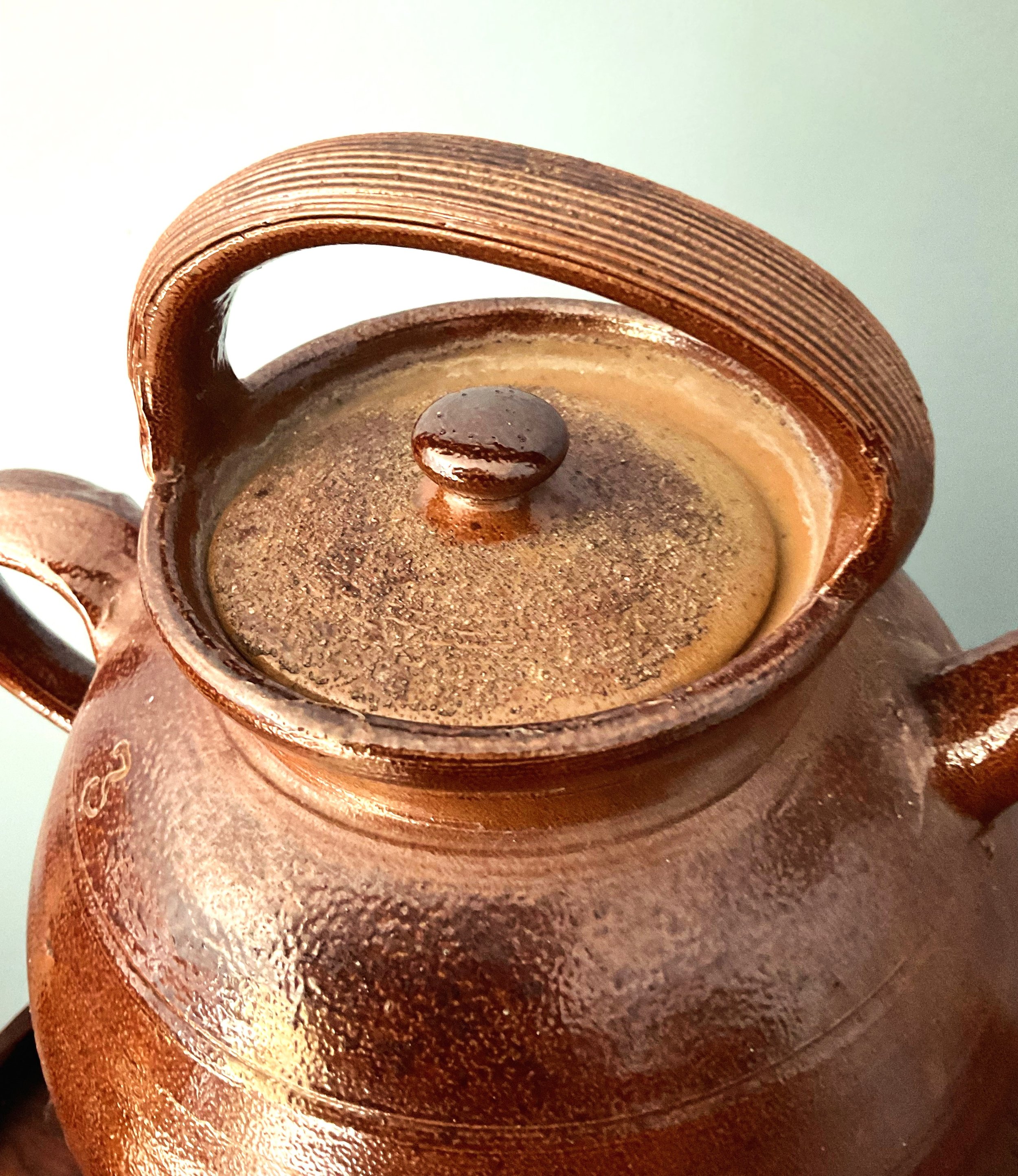 Image 1 of 10
Image 1 of 10

 Image 2 of 10
Image 2 of 10

 Image 3 of 10
Image 3 of 10

 Image 4 of 10
Image 4 of 10

 Image 5 of 10
Image 5 of 10

 Image 6 of 10
Image 6 of 10

 Image 7 of 10
Image 7 of 10

 Image 8 of 10
Image 8 of 10

 Image 9 of 10
Image 9 of 10

 Image 10 of 10
Image 10 of 10











Large Stately Vintage Delft Vase
This beautiful Deft vase is very large and impressive. Its presence creates a stately and imposing air. It has been stamped with the mark ‘Delft Hollanda Handwork’. This maginificent piece features handles made up of four monkeys greeting each other. It has been decorated in a vividly colourful floral design.
Delft ceramics was given the name Delftware because it was produced in and around the city of Delft. It is sometimes referred to as Delft Blauw (Delft Blue). The Delft style originated around 1600. The most highly regarded period of production was between 1640 – 1740. By the 17th and 18th centuries it was a major industry and exported all over Europe. Deft began as an alternative to Chinese blue and white porcelain which was very expensive. Due to its colonial power at the time, the Netherlands merchant fleet established stable trading routes with China and Japan, encouraging an influx of Asian pottery into Europe. Dutch potters were inspired by this Asian pottery and began to imitate Asian techniques. It began as a distinctive style of tin glazed earthenware that used vivid shades of blue. It featured floral motifs, natural landscapes and historical and biblical iconography. By the 17th century Delft had become the main producer of pottery in the Netherlands. Historians believe that Delft potters created over 800 million tiles between the 16th and 17th centuries. Many Dutch homes are still fitted with authentic Delftware tiles that originated during this period.
Delftware isn’t just blue and white. Delft was also inspired by Italian maiolica, a coloured earthenware pottery dating back to the Renaissance era (14th to 17th century). This was a key motivation for the creation of Delftware with polychrome varieties that also flooded the market.
This magnificent vase measures 55 cms in height and approximately 24 cms across.
This beautiful Deft vase is very large and impressive. Its presence creates a stately and imposing air. It has been stamped with the mark ‘Delft Hollanda Handwork’. This maginificent piece features handles made up of four monkeys greeting each other. It has been decorated in a vividly colourful floral design.
Delft ceramics was given the name Delftware because it was produced in and around the city of Delft. It is sometimes referred to as Delft Blauw (Delft Blue). The Delft style originated around 1600. The most highly regarded period of production was between 1640 – 1740. By the 17th and 18th centuries it was a major industry and exported all over Europe. Deft began as an alternative to Chinese blue and white porcelain which was very expensive. Due to its colonial power at the time, the Netherlands merchant fleet established stable trading routes with China and Japan, encouraging an influx of Asian pottery into Europe. Dutch potters were inspired by this Asian pottery and began to imitate Asian techniques. It began as a distinctive style of tin glazed earthenware that used vivid shades of blue. It featured floral motifs, natural landscapes and historical and biblical iconography. By the 17th century Delft had become the main producer of pottery in the Netherlands. Historians believe that Delft potters created over 800 million tiles between the 16th and 17th centuries. Many Dutch homes are still fitted with authentic Delftware tiles that originated during this period.
Delftware isn’t just blue and white. Delft was also inspired by Italian maiolica, a coloured earthenware pottery dating back to the Renaissance era (14th to 17th century). This was a key motivation for the creation of Delftware with polychrome varieties that also flooded the market.
This magnificent vase measures 55 cms in height and approximately 24 cms across.
Not suitable for delivery via Australia Post. Collection by appointment. Please make contact if you would like to arrange another type of delivery. Free delivery to some Melbourne metropolitan areas can be arranged.





































